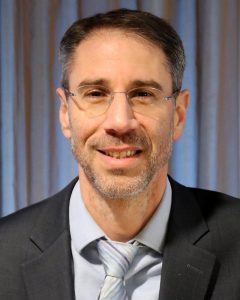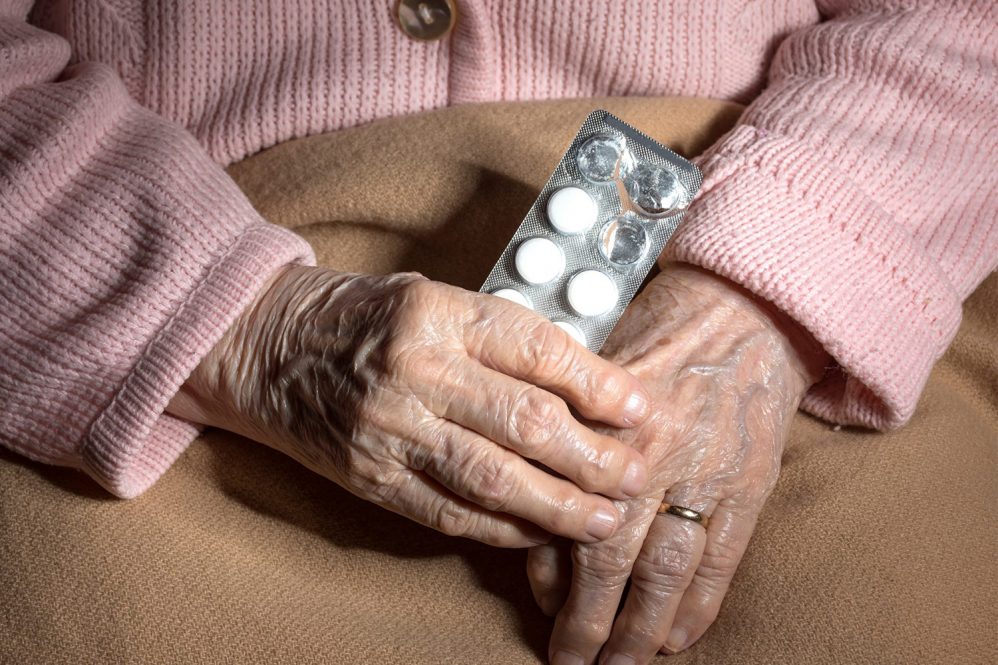Theft of controlled substances like opioid pain medication (OPM) has been studied in health care settings such as hospitals, pharmacies, hospice, and pain clinics. However, while state officials, pharmacists, and care advocates know that these thefts also occur in long-term care homes, the extent and severity are largely unknown due to a gap in empirical research and lack of nationwide tracking.
Assistant Research Professor Eilon Caspi, a gerontologist and researcher at UConn’s Institute for Collaboration on Health, Intervention, and Policy, led a study to increase awareness of OPM theft in assisted living residences and nursing homes. Purdue University School of Nursing doctoral candidate Wei-Lin Xue and nursing Professor Pi-Ju (Marian) Lu collaborated with Caspi.

To the researchers’ knowledge, the exploratory study is the first to examine OPM theft in long-term care settings like assisted living residences and nursing homes. The study evaluated 107 investigation reports that the Minnesota Department of Health classified as “drug diversion” in 104 Minnesota-based long-term care homes between 2013 and 2021.
It found that a total of 11,328.5 tablets were stolen from 368 residents, although the actual number of stolen tablets is likely higher because 12% of the investigation reports the study examined did not detail the number of medications stolen.
“On one hand, it’s surprising, but on the other hand, long-term care homes are often left behind. That was the case decades prior and during the deadly COVID-19 pandemic. All too often, these care homes seem to be the forgotten segment of our healthcare system,” says Caspi. “My hope is that this exploratory study will raise public awareness of this form of elder mistreatment and encourage education in these settings and encourage other researchers to study it more rigorously. Older adults living in long-term care settings have a right to be free from this largely invisible form of mistreatment. This is their home.”
Additional findings of the study include:
- About 94% of stolen medications were opioid pain medications (OPM).
- The average duration of theft was 56 days.
- In most cases, a single employee was responsible for the theft of controlled substances.
- Nearly half of the employees stealing the medications were nurses.
- Nurses played a key role in initially suspecting medication theft in at least 43% of incidents.
- In the vast majority of investigation reports, employees stole medications for personal use such as pain management for themselves or friends or family.
Medication theft can have far-reaching consequences. Patients may live with excruciating pain because of their medication being stolen or tampered with. Staff who are chemically impaired may negatively impact the quality-of-care residents receive. Staff could also lose licensure or be sued for malpractice.
The researchers hope the study will encourage the Centers for Medicare & Medicaid Services (CMS) to start tracking this phenomenon in approximately 15,000 nursing homes and that the National Ombudsman Reporting System (NORS) will begin tracking it in its centralized mistreatment complaints dataset for nursing homes and assisted living residences.
With uniform national tracking, researchers, policymakers, and the long-term care industry can better understand the frequency and severity of pain medication theft as well as the risk factors. They could then develop prevention strategies and protect residents’ right to access their prescribed medications.
“If you don’t track medication theft, essentially, it doesn’t exist and you’re in no position to address it,” said Caspi.
Caspi notes that tracking is just one aspect of addressing OPM theft. The prevalence of medication theft is influenced by several factors including inadequate medication management policies, procedures, and practices, employees not securing medications or overlooking red flags, and other areas of vulnerability awaiting exploitation. A stronger culture of safety in long-term care homes, tougher regulatory standards and enforcement, and early detection could all help deter OPM theft.
“Medication theft doesn’t occur in a vacuum. If care settings don’t manage their medications well, then there are more opportunities for theft. If employees have an addiction to opioid pain medications, they can often figure out how to exploit those weaknesses,” said Caspi.
Another factor is balancing the need to hold employees accountable and to offer support and treatment to those suffering from addiction while using a dignified, stigma-free, but effective approach.
OPM theft is a crime and long-term care homes have a legal, regulatory, and ethical obligation to protect residents. At the same time, OPM theft is often a symptom of addiction, and simply firing an employee found to be stealing pain medications does not help the employee or protect the public, says Caspi.
To watch Caspi’s webinar on the study finding, please visit https://bit.ly/3RsyGKf.



